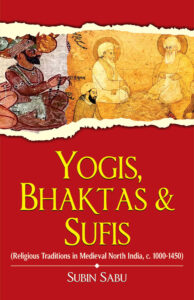It never rains but it pours. From having no English translations of Akutagawa Prize-winning Rie Qudan, three of her novels have (or soon will have) become available in a matter of months, the first two—“Schoolgirl” and “Bad Music”—in a combined volume from Australian publisher Gazebo and Sympathy Tower Tokyo from Penguin in Britain and Summit in the US.

A deeply moving and often hilarious new novel by the author of The Wangs vs The World following a woman who becomes an internet folk hero in the most unexpected way, catapulting her into fame and influence just as she’s finally beginning to reckon with her complicated past.
In Kyung-Ran Jo’s Blowfish, two people flirt with death in their own traumatic ways, only to find themselves slowly entangled in one another. Translated from the original Korean by Chi-Young Kim, the novel unfolds through alternating perspectives and flits between Seoul and Tokyo. Blowfish privileges atmosphere over plot, unfolding as a moody and cinematic meditation on the slow ascent from the depths of depression.

The poet in Brown God’s Child makes no bones about laying bare the cultural rooting of her identity in the very first poem of the volume. Be it through “burnt caramel”, the colour of her God’s skin or the sounds of her language—half Sanskrit and half Dravidian—poet Smitha Sehgal makes her entry as a formidable voice.
New Story of the Stone by Wu Jianren is one-part fan fiction, one-part historical fiction, and one-part science fiction. A full translation by Liz Evans Weber gives English-language readers access to the early 20th-century novel and a fascinating perspective on a moment in China’s history that speaks volumes about its present and possible futures.
Sanjana Satyananda, the main character of Sanjena Sathian’s novel, Goddess Complex, is a bit of a mess. She’s back in the States after a spell in India, ending her marriage with her actor husband when he wanted kids… and she didn’t. Her friends are starting to settle down—and wondering when Sanjana will do the same. And, distressingly, others in her life swear they’ve seen her back in India, still married to her husband, and happily pregnant.

Cindy Fazzi’s two-book series follows a Filipino American bounty hunter as he tracks down his most elusive assignments and discovers explosive secrets.
Brahm Saxena summons his family—his wife, daughter and son—to announce that they, especially the children, should not expect anything from him as inheritance. Rohit, the son, is rattled but Tara, the daughter, is financially independent and doesn’t bother about what she doesn’t feel entitled to.
Nan Z Da has been teaching Shakespeare’s play King Lear, she says, for more than six years. One cannot help but envy her students.

Yoga has become highly popular worldwide and is generally received with enthusiasm in the western world. But it is mysterious in nature as, several interpretations have been offered by scholars from antiquity to recent times. Earlier, Yoga was practiced in the spiritual, philosophical and metaphysical sense in Indic traditions. In the medieval period, it was transformed by Hathayoga where physical exertions were applied to achieve the path of Samadhi. Also, it influenced two mainstream traditions prevalent in north India, Hinduism and Islam, in creating their respective mystical movements.

You must be logged in to post a comment.